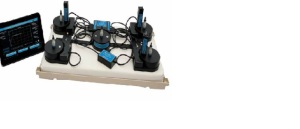by
Lisa Chamoff, Contributing Reporter | May 27, 2015
From the May 2015 issue of HealthCare Business News magazine
In “The City on the Edge of Forever” a Star Trek episode that aired in 1967, Mr. Spock complained that he was unable to gain access to the data in his tricorder, lamenting that he could, if only he were able to tie his device in with the ship’s computers, a remarkably prescient vision of the present-day dilemma of interconnectivity. What Healthcare Technology Management professional hasn’t felt exactly the same way, like futuristic breakthroughs in testing equipment were “on the edge of forever,” when faced with a challenge in the field?
While the technology has advanced, test equipment still has a long way to go, says Purna Prasad, director of clinical technology and biomedical engineering at Stanford University Medical Center, in the heart of California’s Silicon Valley.
“It has not evolved with the speed of technological advancements,” Prasad says, “and that is where biomedical engineers are facing a problem.”
Prasad says that ideally test equipment would be application-based and operating in a mobile environment, so technicians can just use their own smart-phone, tablet or laptop, without having to carry around three or four pieces of equipment every time they go out. Even better, says Prasad, biomedical test equipment would automatically connect with the computerized maintenance management systems, requiring the intervention of technicians only when safety characteristics are violated. For now that is just “beam me up” thinking, and for it to happen, says Prasad, “manufacturers will have to think outside the box.”
The present state of the test-equipment landscape has manufacturers trying to address the challenge that many biomedical engineering departments are stretched thin. “People at facilities now are trying to do more with less,” says Michael Bayliss, global sales manager for Datrend Systems. Beyond that, the push to integrate data throughout the health care delivery system means that manufacturers must develop devices that communicate with electronic health records systems, while ensuring that equipment is safe to use on the patients and meets the functional specifications of the manufacturer.
One device that illustrates the focus on greater productivity and app-like ease of use is the vPad-IN, an infant incubator and infant radiant warmer testing system that Datrend recently introduced. It uses the same Android tablet technology that comes with Datrend’s electrical safety analyzers, and which Bayliss says allows technicians to multi-task during the testing, which can be a time-consuming process.
